Contents
Trello for Project Management: A Complete 2025 Guide
By Shyamal ParikhOct 20, 2024

With millions of users—including big names like Google and Adobe—it’s hard to ignore Trello for project management. It’s simple, flexible, and popular, but is it the right tool for your team?
Sure, it’s great for organizing tasks and keeping projects visible. But does it have what it takes to optimize your time and resource use, and handle client demands without missing a beat?
In this guide, we’ll break down Trello’s features, weigh the pros and cons, and share user insights to help you decide if it’s worth your attention.
But first, let’s talk about the basics.
What is Trello?
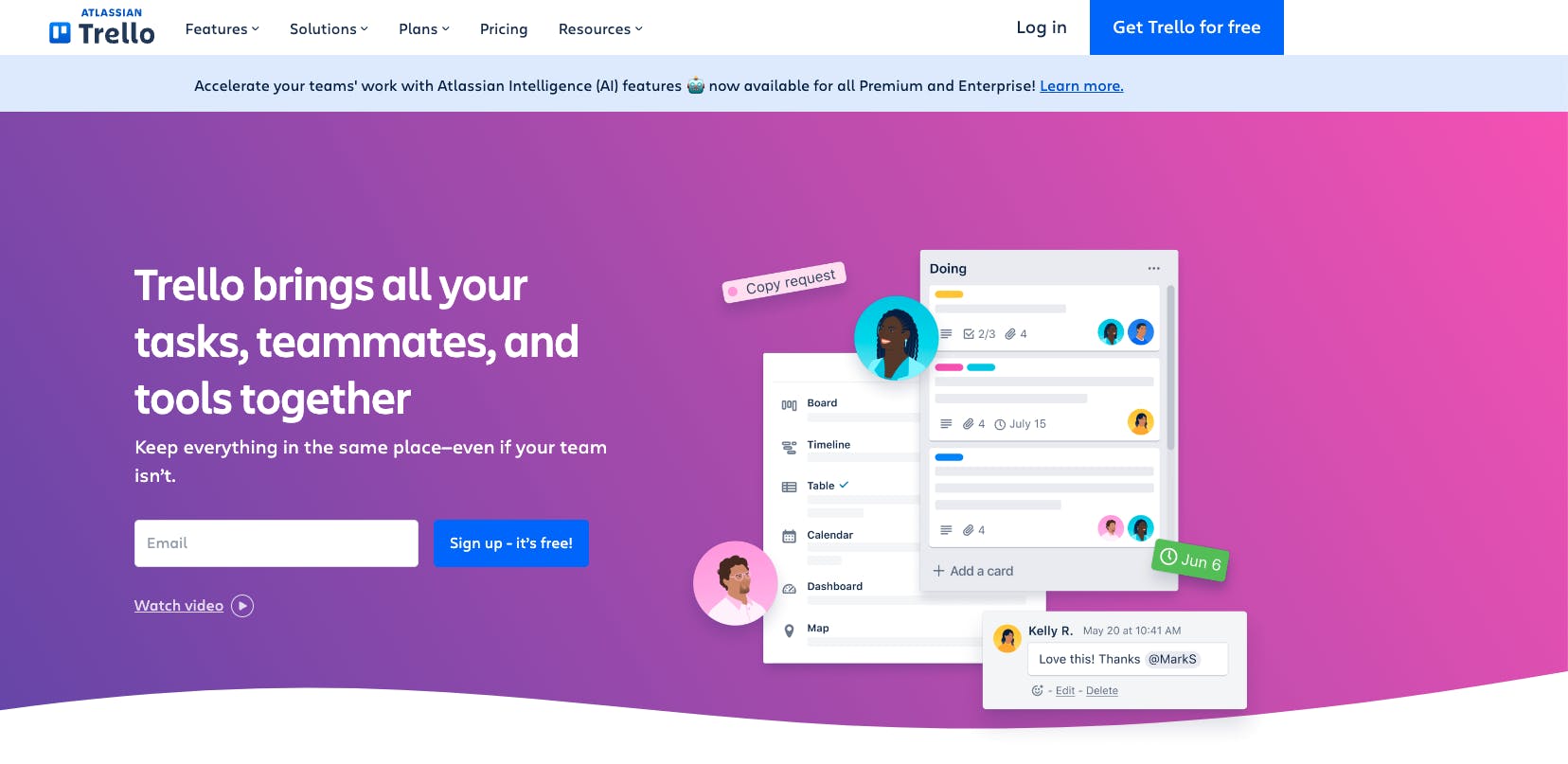
Trello is a versatile project management tool that takes a visual approach to organizing tasks and streamlining workflows. Known primarily for its Kanban boards, Trello lets you create cards to represent tasks, organize them into lists, and move them across various stages as you make progress.
It also boasts one of the best mobile apps in the business, allowing you to stay connected to your projects from anywhere.
That said, Trello lacks robust tools for granular control over time, resources, and project budgets. It also doesn’t include built-in reporting features -- which forces a reliance on costly add-ons or Power-Ups (more on those later).
Now that you know what Trello does, let's take a closer look at its key features.
Trello Project Management Key Features
Trello provides a set of limited yet easy-to-features, such as:
Multiple work views: Let’s start with the obvious: Trello is all about its Kanban boards. They’re visual, intuitive, and great for tracking tasks through different stages. However, if you’re looking to switch to views like Calendar or Timeline, you’ll need to upgrade to Trello’s $10-per-month premium plan. Unlike some tools that include multiple views in their free or lower-tier plans, Trello reserves these features for its higher-priced options.
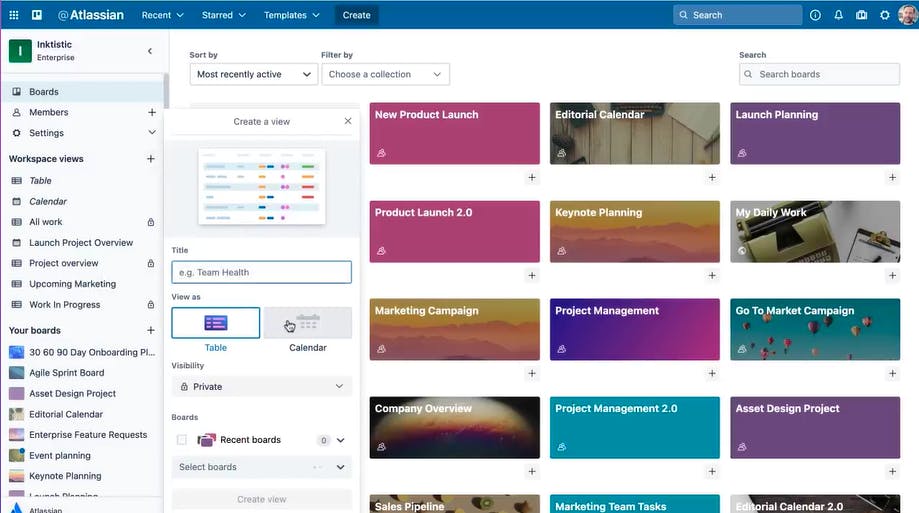
Boards: At the heart of Trello are its Boards—your project’s command center. Each board represents a project or initiative, bringing everything you need into one organized space. You can invite team members, share updates, and keep all related tasks in one place.
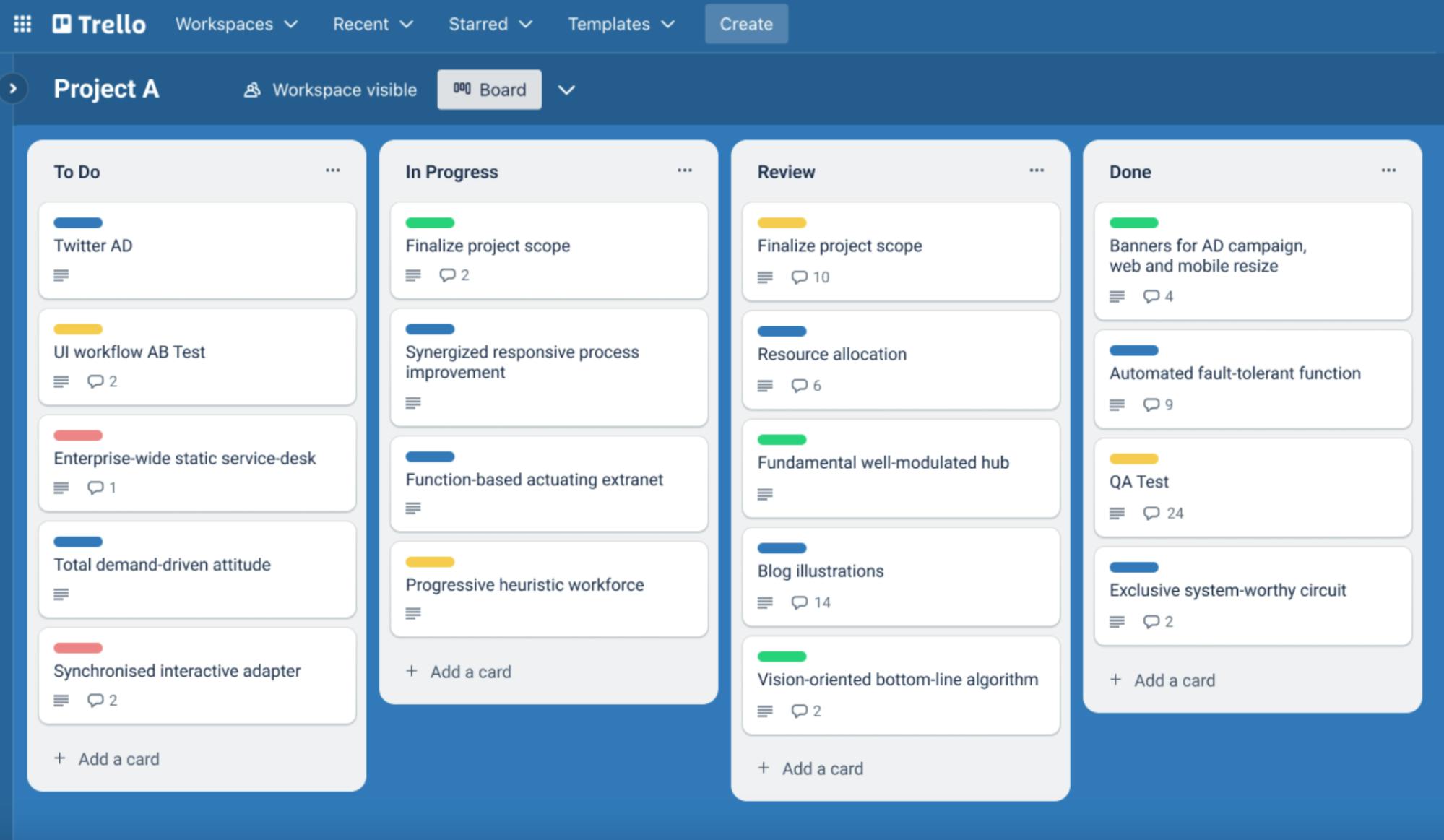
Lists: Within each board, you’ll find Lists—columns that help you organize tasks into categories or stages, such as “Backlog,” “In Progress,” and “Completed.” They provide a clear visual flow of work, so you can easily see what’s happening and what’s coming up next.

Cards: They represent individual tasks or items within your lists. Each card packs details: descriptions, attachments, due dates, checklists, comments—you name it. You can assign team members to cards so everyone knows who’s doing what. Moving a card from one list to another is as simple as drag and drop, helping you track progress effortlessly.
Filter and sort options: Got a cluttered board? Trello’s filtering and sorting options come to the rescue. You can filter cards by labels, due dates, or team members. This makes it easier to focus on specific tasks or prioritize your work.
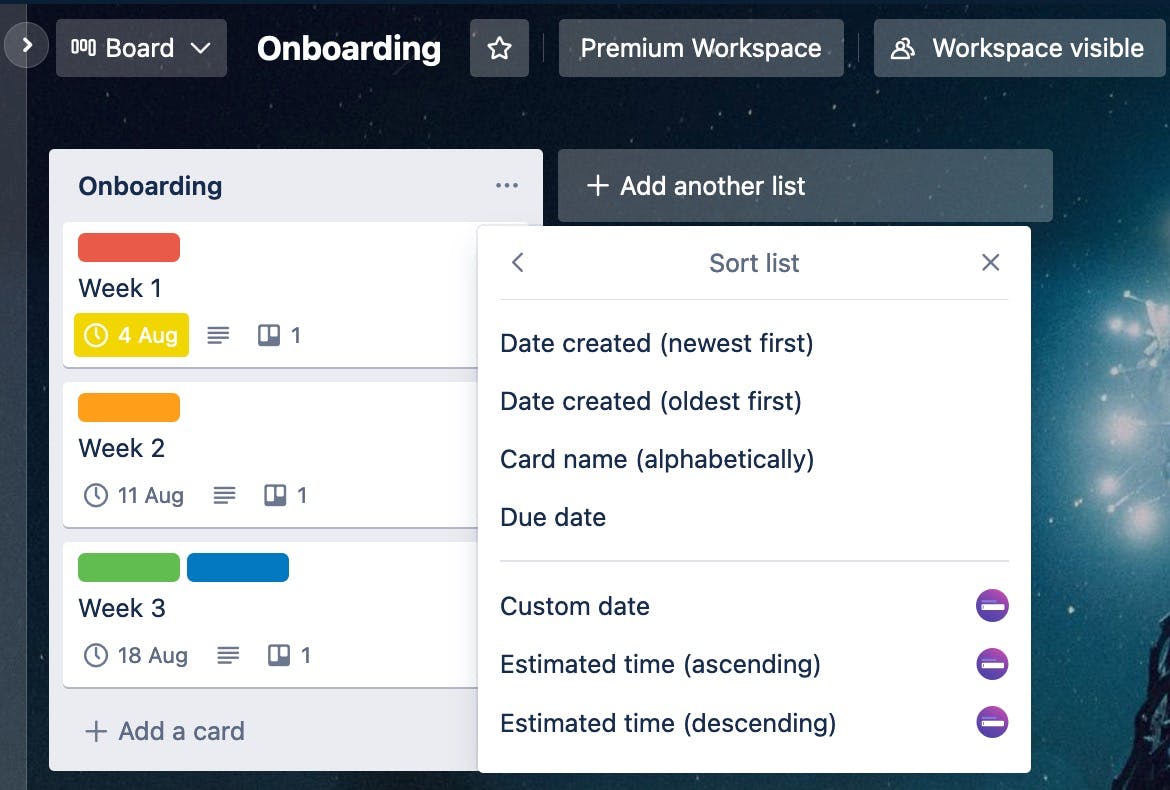
Power-ups: They’re like integrations that add extra features to your boards. Need advanced reporting, time tracking, or integration with tools like Slack and Google Drive? Power-Ups have you covered. Just remember, free users get one Power-Up per board. If you need more, you’ll have to upgrade.
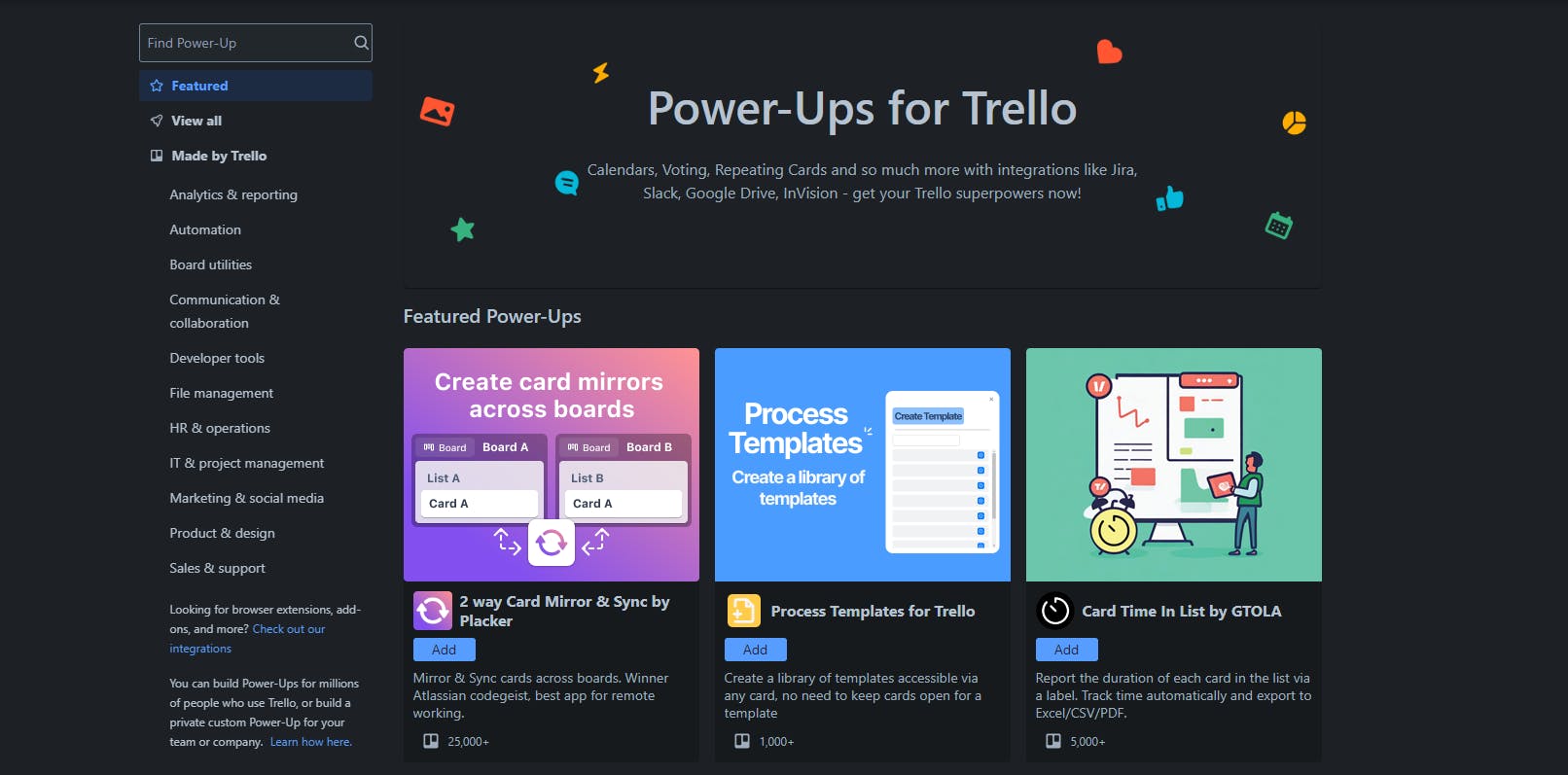
Automation: Repetitive tasks can be a drag, but Trello’s Butler takes them off your plate. With rule-based triggers—like automatically moving a card to “Completed” when all checklist items are checked off—Butler streamlines your workflow, letting you focus on what truly matters.
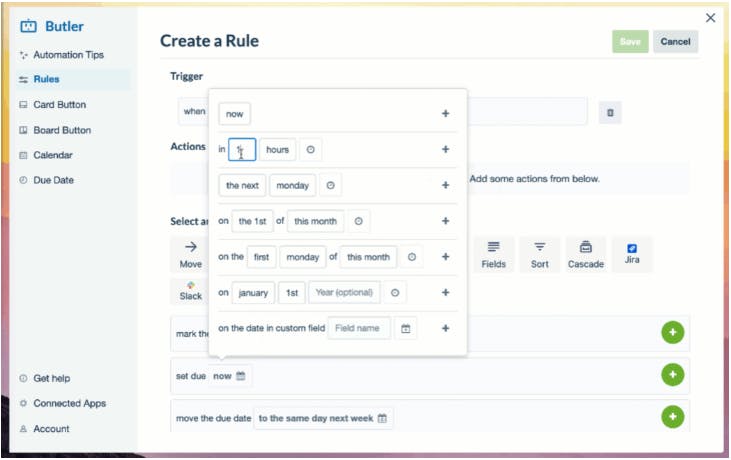
Is Trello Good for Project Management?
Trello’s simplicity makes it a go-to for straightforward projects, but how does it fare when things get more complex?
While its visual Kanban boards and intuitive drag-and-drop interface are easy to use, Trello often falls short for advanced use cases like capacity planning, budget tracking, and client collaboration.
Let’s take a closer look at what else it's missing
Limited Project Views
With Trello's free and entry-level plans, you’re essentially locked into the Kanban view. While Kanban boards are great for visualizing workflows, they might not suit projects that require other perspectives. To access views like Calendar, Timeline, Table, Dashboard, or Map, you’ll need to upgrade to the Premium plan at $10 per user per month.

👉 SmartTask, on the other hand, offers multiple project views—List, Board, Calendar, and Timeline (with up to 100 uses)—even on its free plan. This flexibility allows your team to visualize work from different angles without extra costs.
No Subtasks or Dependencies
In Trello, tasks are organized as cards, but there’s no native support for subtasks or task dependencies. This limitation makes it challenging to break down complex tasks into manageable pieces or create workflows where one task begins only after another is completed.

👉 SmartTask addresses this with robust task management features like subtasks and dependencies. These tools help your team break big projects into smaller, actionable steps while setting up clear workflows to ensure nothing gets overlooked.
No Centralized Project Tracking
Trello doesn’t offer a portfolio feature to give you a high-level view of all your ongoing projects. Instead, you’re left navigating between individual boards, making it harder to track progress across multiple initiatives in one place.

👉 SmartTask tackles this with Portfolios, allowing you to stack multiple projects and track overall progress, incomplete tasks, and team members involved—all in one place. It's like having a bird's-eye view of your entire operation, making strategic planning and resource management a breeze.
No Native Time-Tracking
Trello doesn’t include built-in time-tracking capabilities. That means you’ll need to integrate third-party apps or invest in other Atlassian products like Jira to monitor your team's productivity.

👉 SmartTask, on the other hand, offers built-in time tracking, timesheets, and exportable logs to help track time accurately. You can also set task-level time estimates and assign billable rates to your team, giving you a clear view of project profitability and ensuring more precise invoicing and improved profit margins.
No Built-In Analytics
Trello does not offer out-of-the-box reporting or analytics. To get even basic reporting features, you have to rely on Power-Ups or external integrations, which might not give you the depth of insight you need.

👉 SmartTask provides advanced analytics and customizable reports right off the bat, including data visualizations like charts and graphs. This empowers your team to monitor KPIs, spot trends, and make data-driven decisions to enhance performance.
No Built-In CRM
Trello doesn't include a built-in CRM. So, if you’re trying to manage client communications, track leads, or nurture relationships, you’re stuck juggling extra tools or complicated integrations.

👉 SmartTask offers a robust built-in CRM, along with features like call recording to keep all client interactions organized. Plus, the client portal provides a dedicated space for clients to access updates and communicate, ensuring smoother collaboration and helping you strengthen those valuable relationships.
No Resource Management
Trello doesn't let you monitor your team capacity or allocate resources based on who's available. This can result in some team members being overworked while others remain underutilized.
👉 SmartTask includes a Workload View and Capacity Planner, allowing managers to distribute tasks evenly and optimize team performance.
Limited Admin Controls
Trello's lower-tier plans offer only basic administrative controls. You can’t set granular permissions or manage user access in detail. This becomes a challenge when working with clients or contractors who shouldn’t have visibility into everything.
👉 SmartTask solves this with advanced user controls that allow you to invite clients and contractors to your workspace while controlling exactly what they can see and do.
SmartTask: A Better Alternative to Trello
You already know how SmartTask outshines Trello in time and resource management. Now let's take a look at what else it brings to the table:
- Feature-packed tasks: In SmartTask, each task comes with a rich-text editor for adding detailed descriptions and the ability to tag team members, leave comments, make video calls, set due dates and reminders, and log work hours.
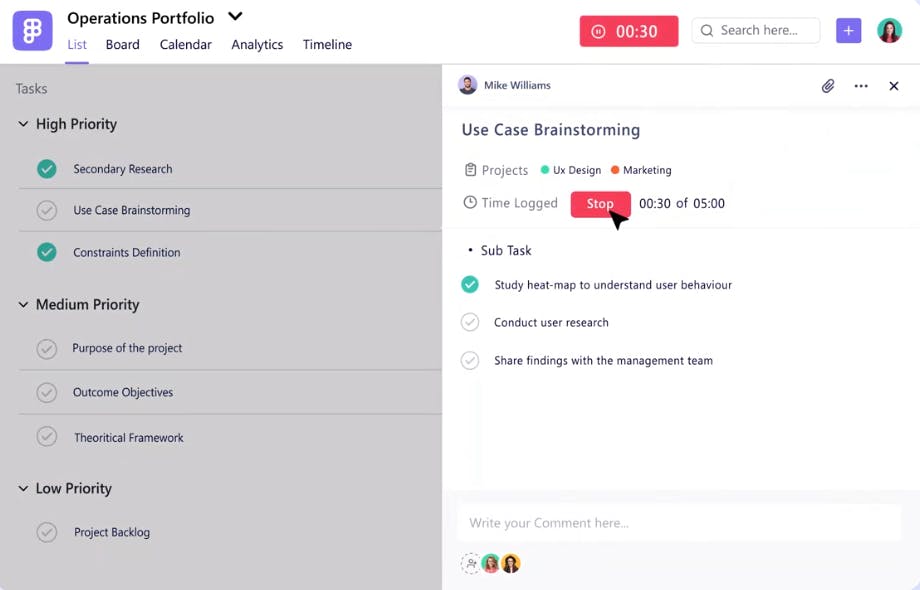
- Advanced analytics: SmartTask lets you stack multiple projects together into a portfolio for seamless progress tracking. You can also create custom reports, visualize data as line, bar, and pie charts, and save them to your analytics dashboard.
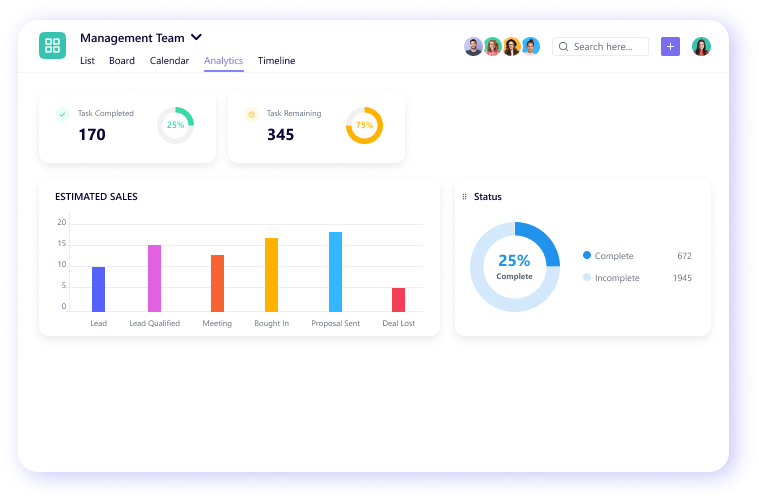
- Cost Estimation: You can also set project budgets in SmartTask, compare estimated vs. actual costs, and monitor profitability using advanced time-tracking tools.
- Automated check-ins: You can schedule regular updates from your team members in SmartTask. They can be fully customized with specific questions and sent out during hours that work best for everyone.
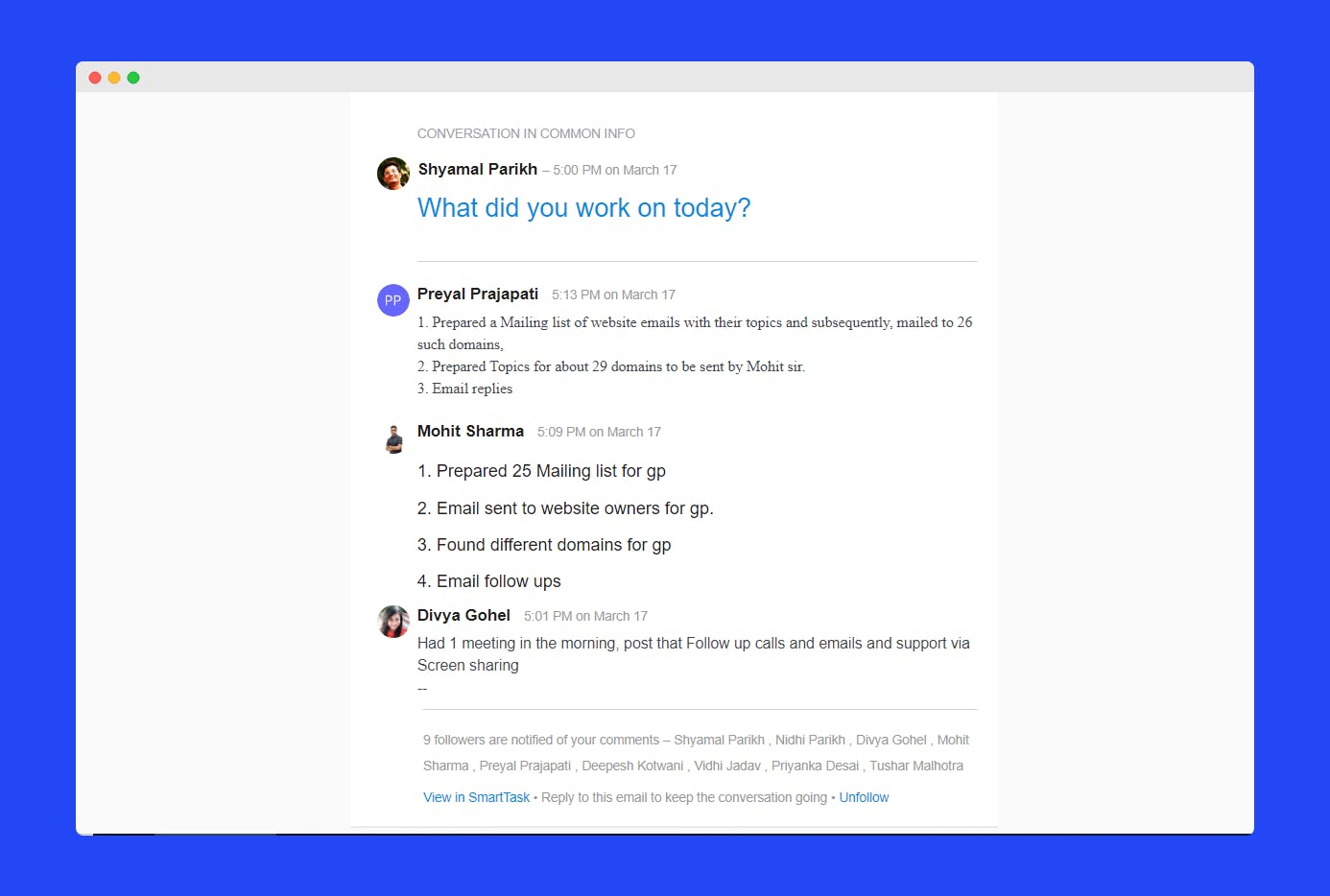
- Built-in chat, video calling, and comments: SmartTask allows you to collaborate in real time with your team using built-in chat, video calling, and task comments.
- CRM: SmartTask features a built-in CRM that helps you track potential leads through various deal stages, predict sales, analyze team performance, and record client interactions for training and analysis.
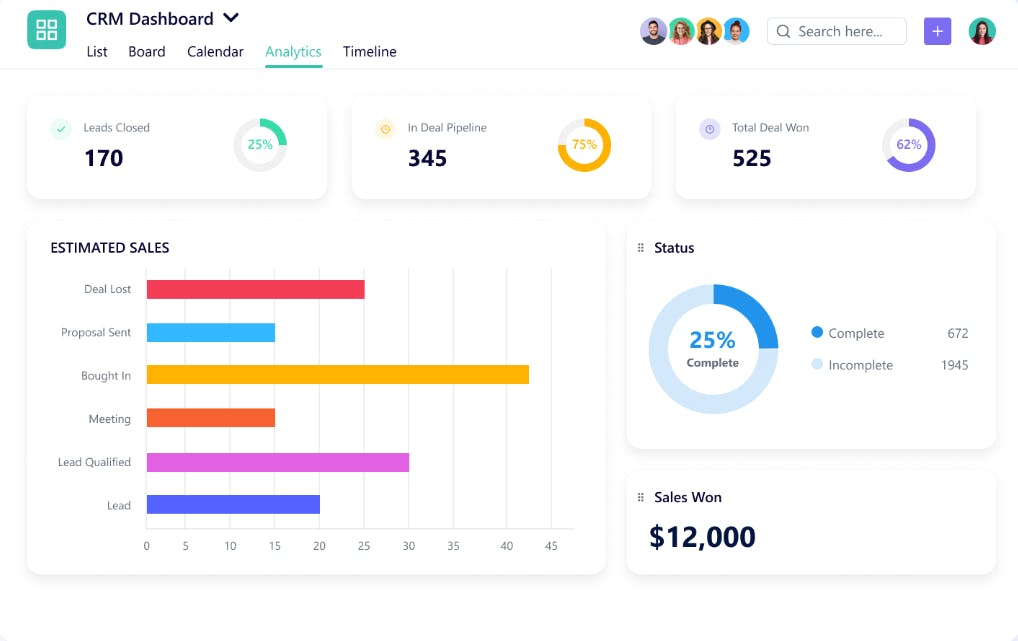
- Built-In Templates: SmartTask comes with 100+ templates to help you jumpstart client projects. It also lets templatize past projects and create custom templates tailored to your requirements.
- 1000+ integrations: SmartTask offers 1000+ integrations, most of which are free!
- Available on: Windows, macOS, iPhone, iPad, Android, Chrome, Safari, and Firefox.
Wrapping Up
Trello's simplicity makes it a go-to for small teams and straightforward tasks, but when it comes to managing more complex, multi-layered projects, it starts to fall short. The lack of multiple views, missing subtasks, and limited resource management means you're often left searching for workarounds or paying extra for features that should come standard.
SmartTask, however, is designed to scale to meet your needs. It offers everything Trello doesn’t—subtasks, dependencies, time tracking, CRM, and multiple project views—all accessible from the start. Whether you're managing large teams, juggling client projects, or tracking billable hours, SmartTask provides the full range of tools without hidden costs or unnecessary upgrades.
Why compromise on features when you can have a solution built for growth?
👉 Sign up for SmartTask’s free forever plan and discover a better way to manage your projects.
Frequently Asked Questions (FAQs)
1. What is Trello Good For?
Trello is ideal for small teams or individuals managing simple, straightforward tasks. Its visual Kanban boards make task tracking easy, and it’s great for organizing workflows that don’t require complex features like time tracking or resource management.
2. Is Trello worth its price?
Trello’s free plan is sufficient for basic task management. However, its paid plans, which unlock multiple views and integrations, may feel pricey when compared to other tools offering similar or more advanced features at lower tiers. If you need robust project management capabilities, you might want to look into these alternatives.
💡You Might Also Want to Check Out:-
👉 Notion for Project Management - A Complete 2025 Guide




